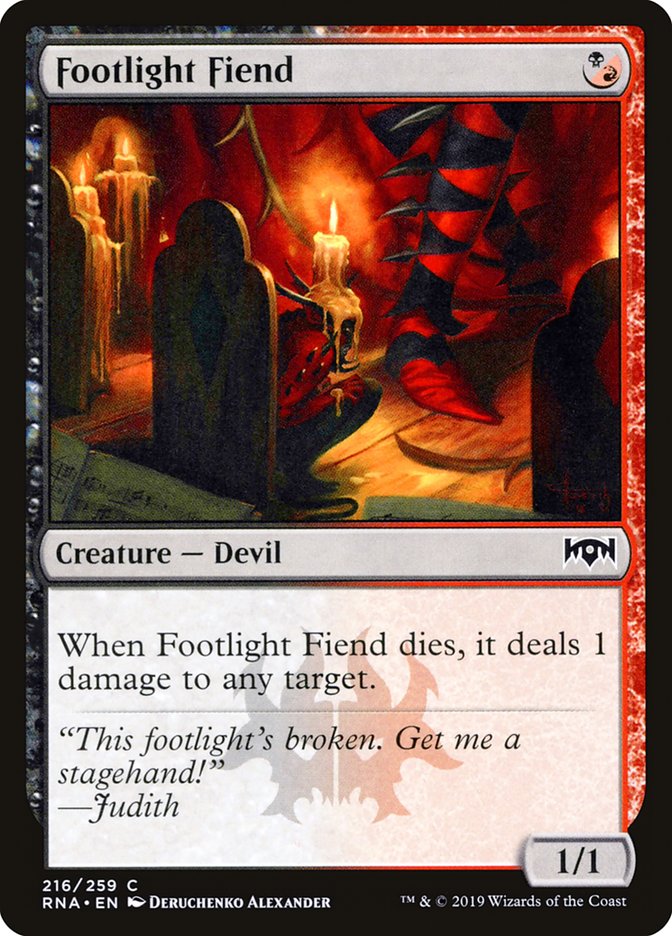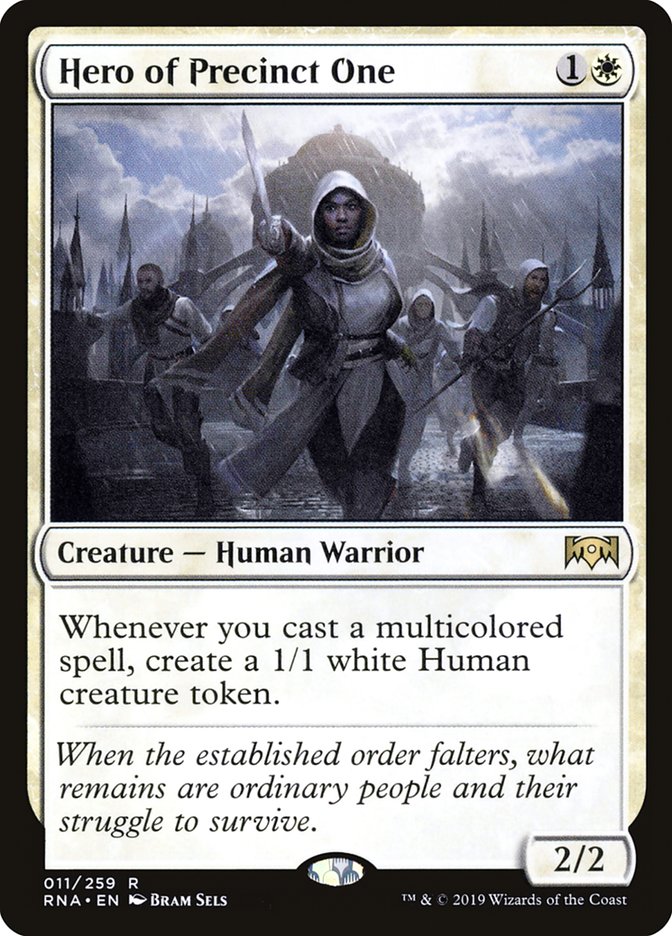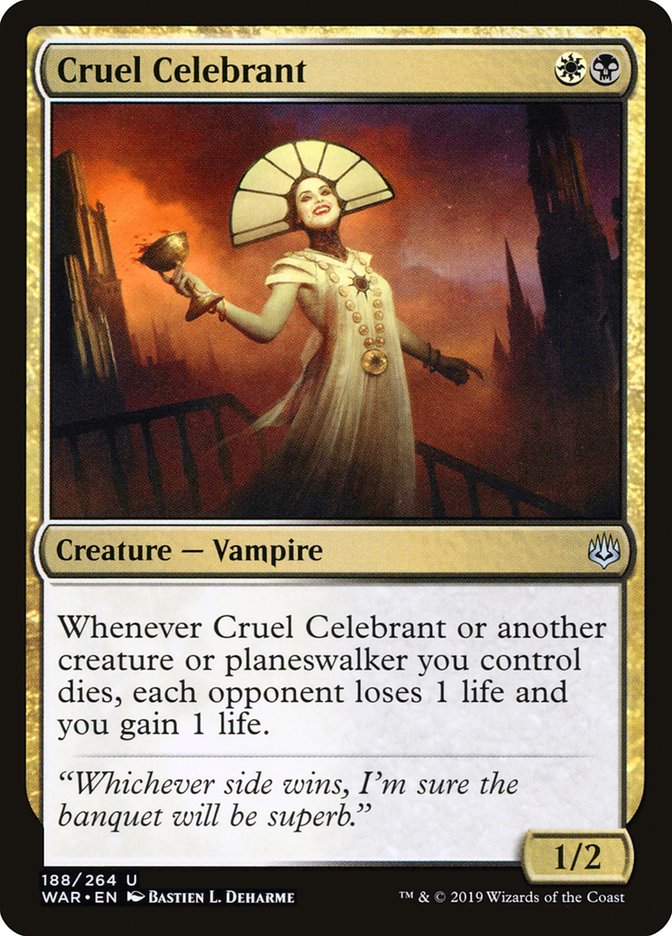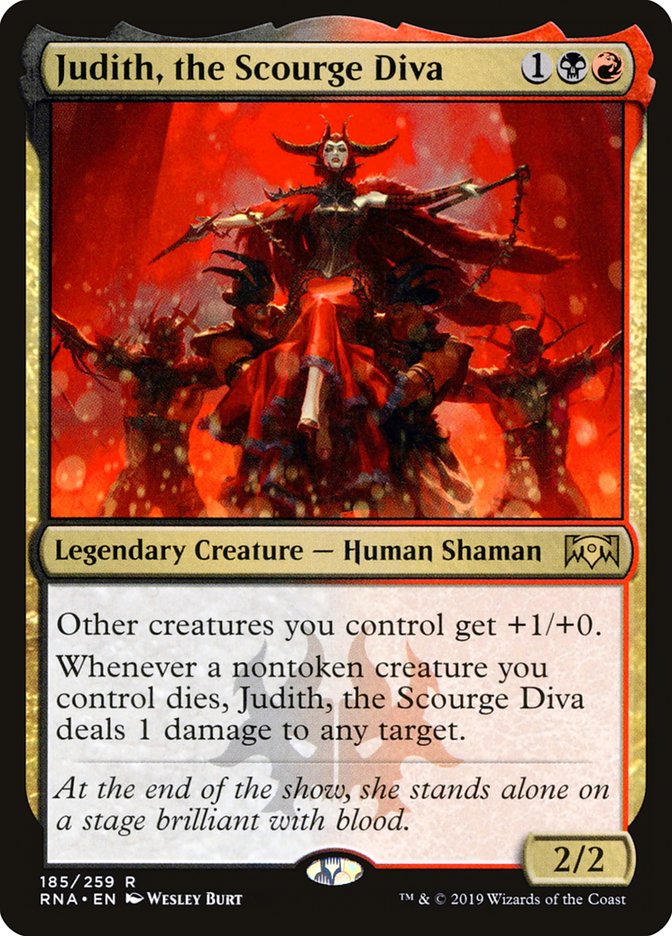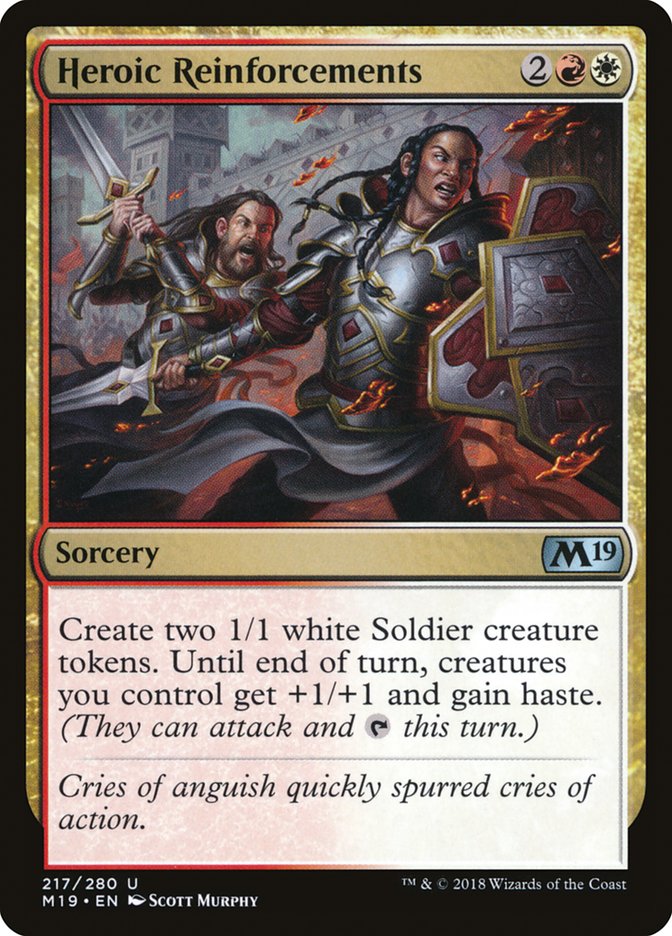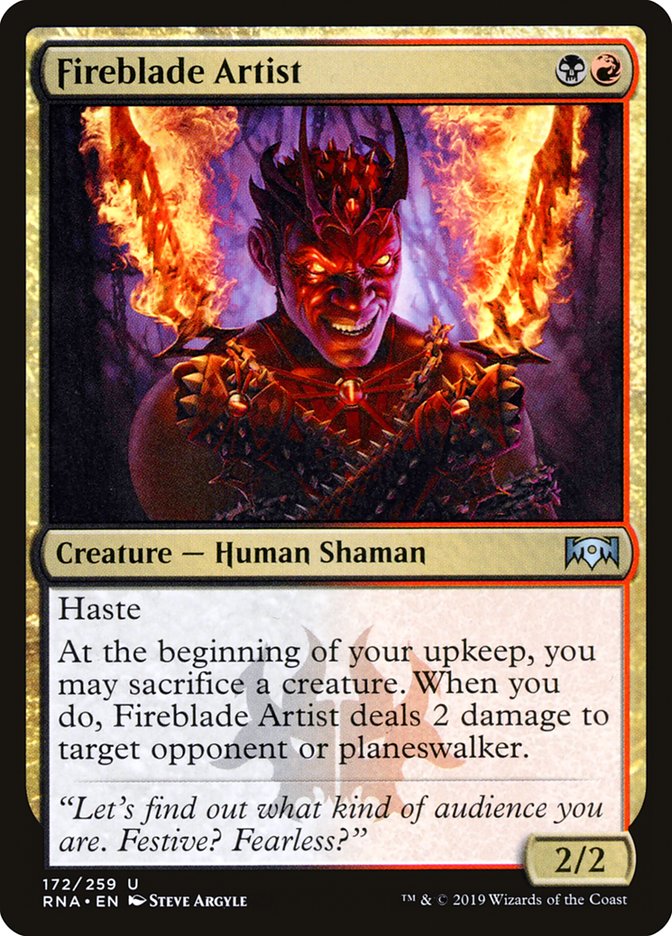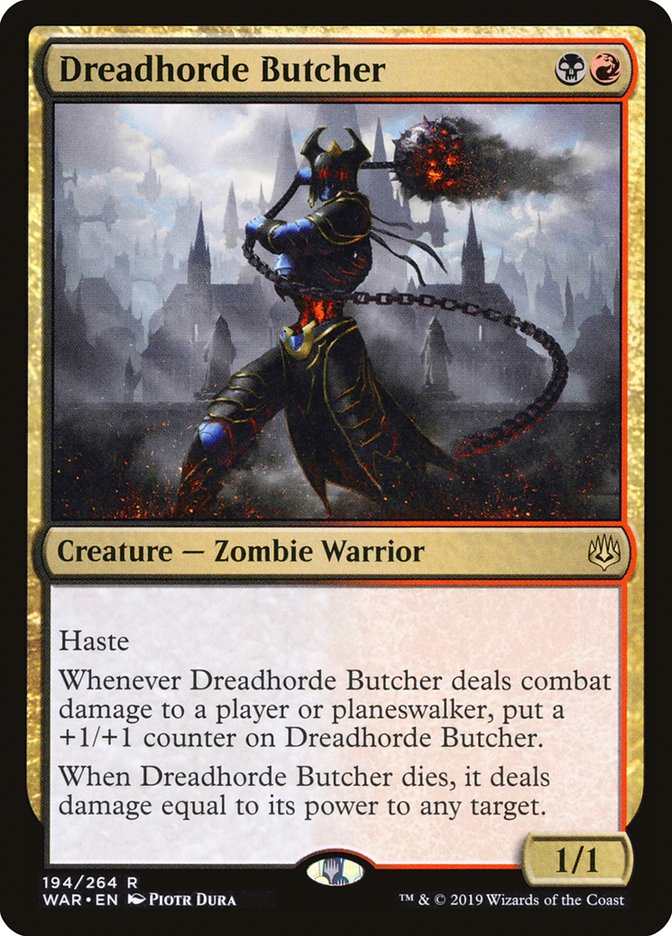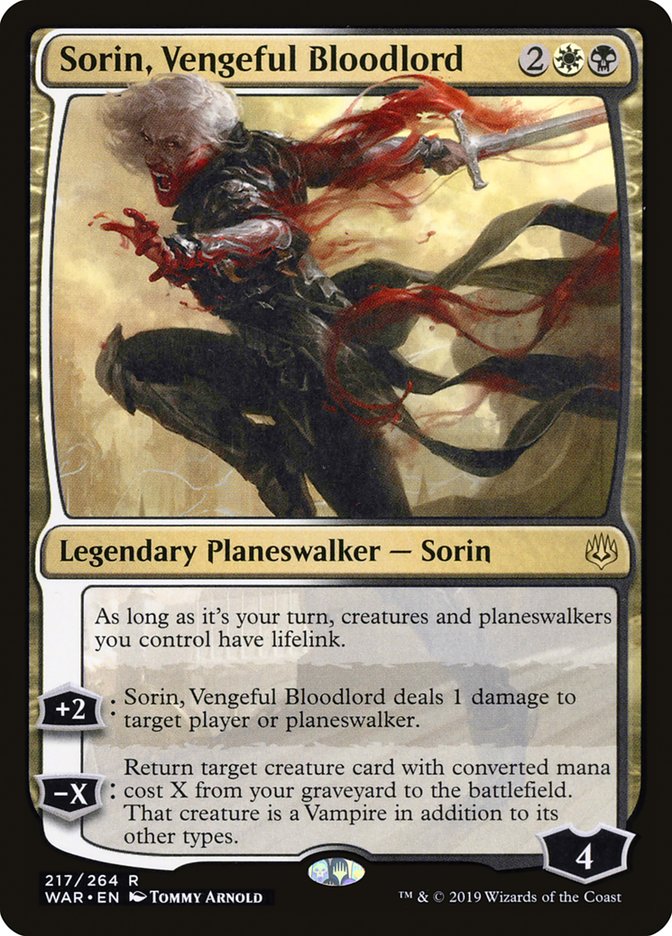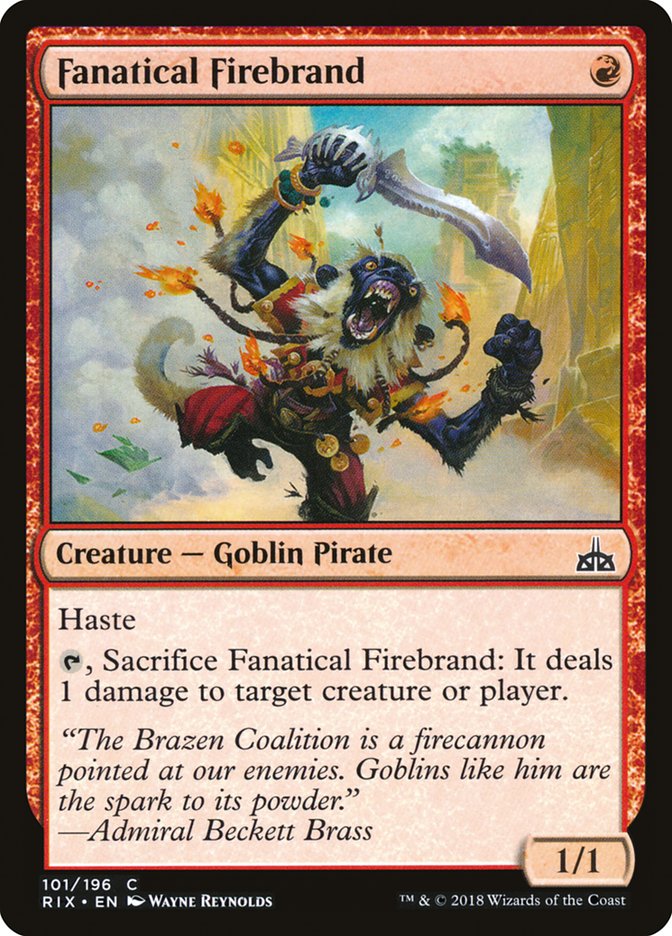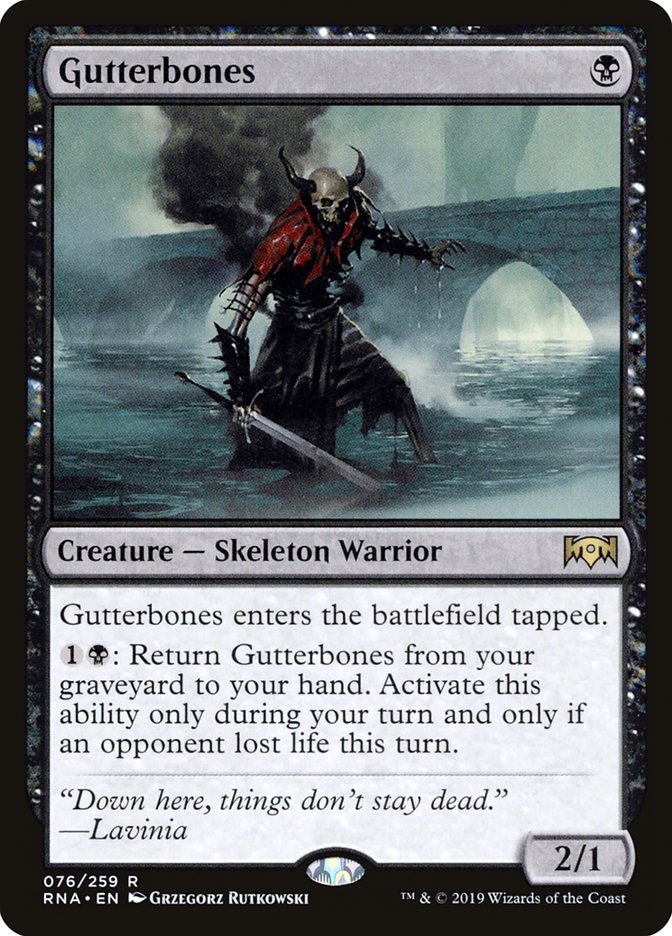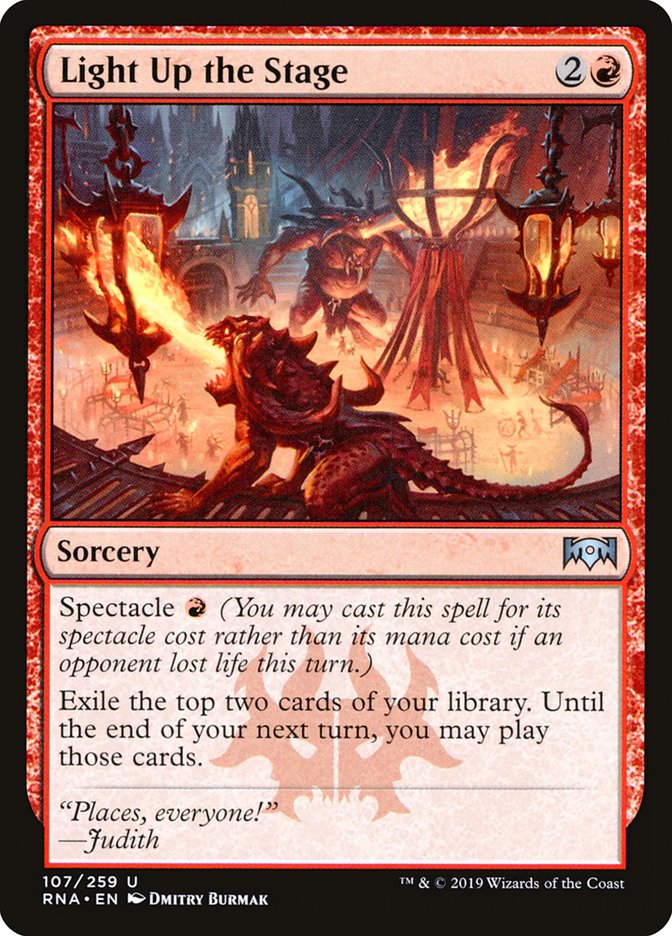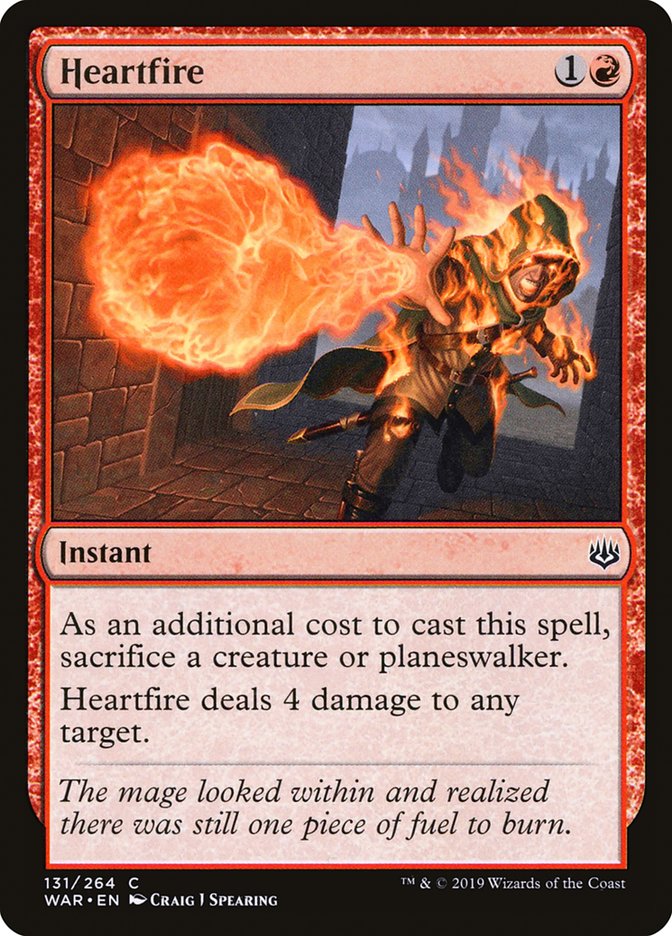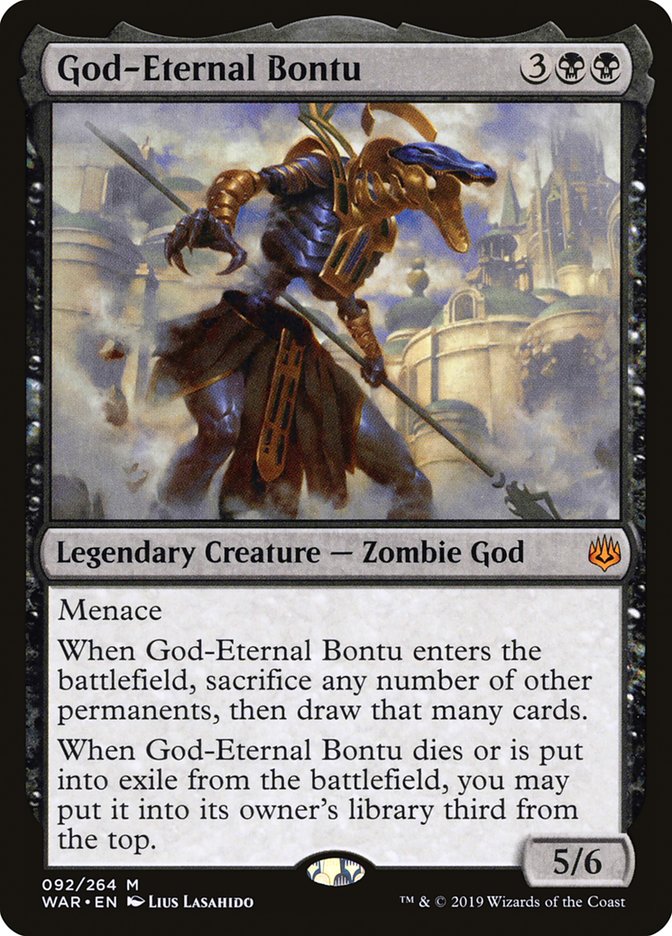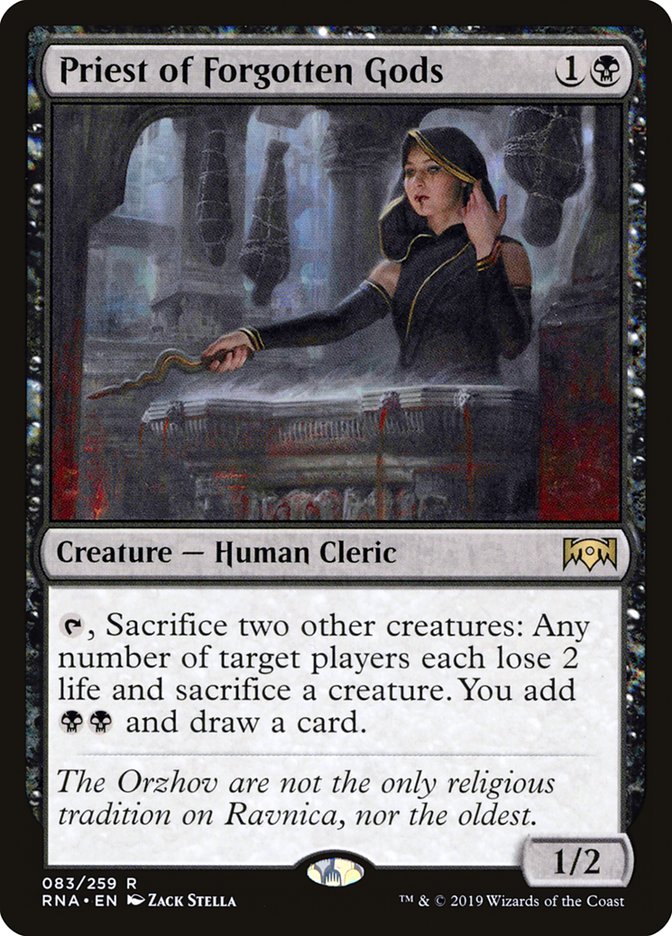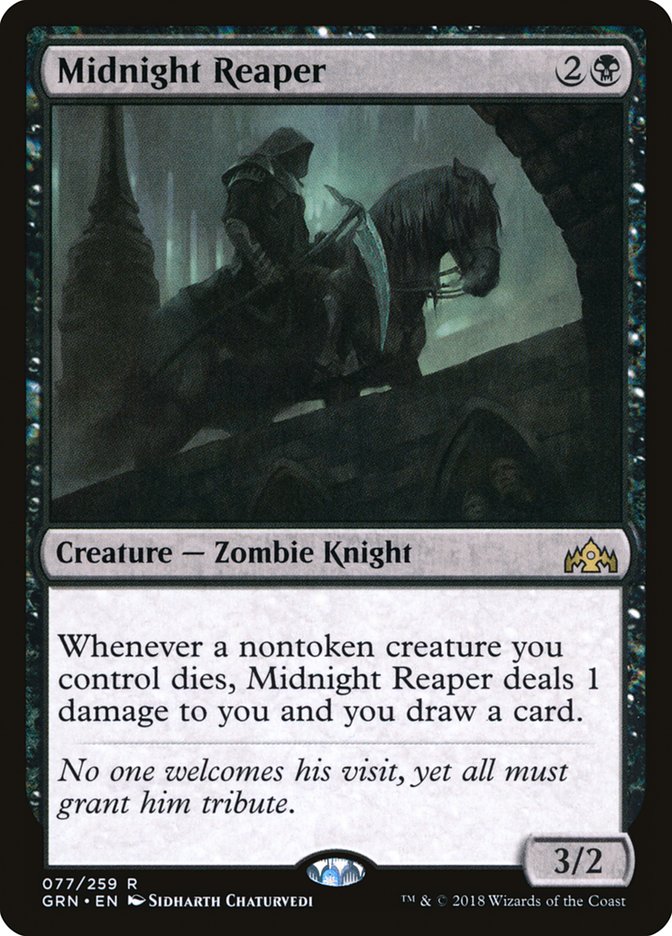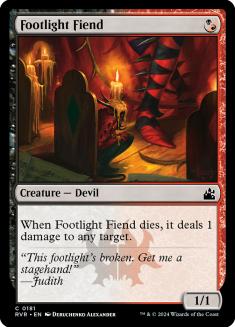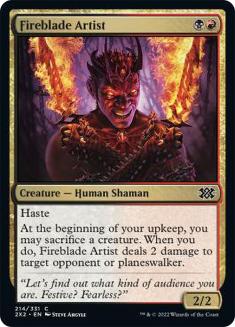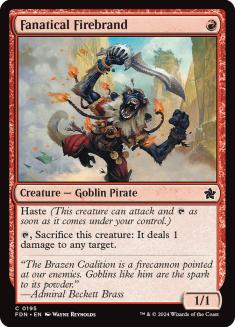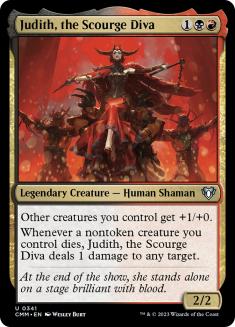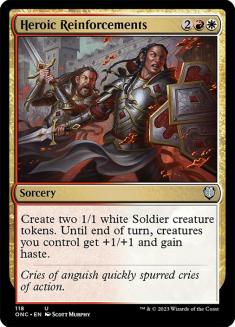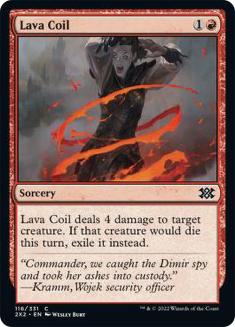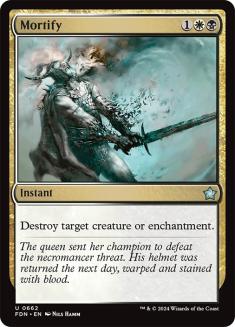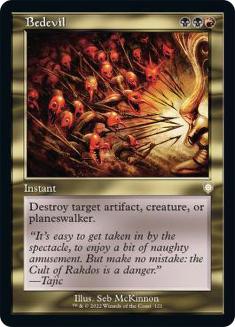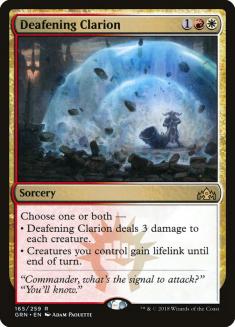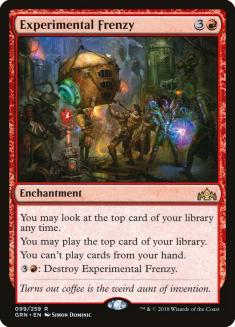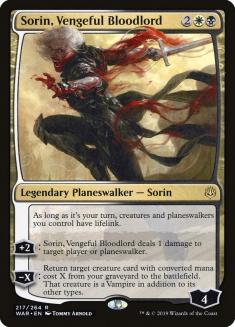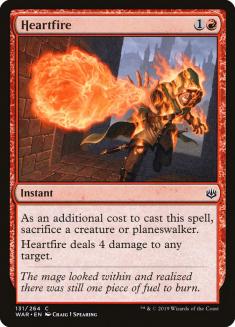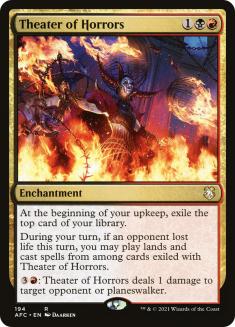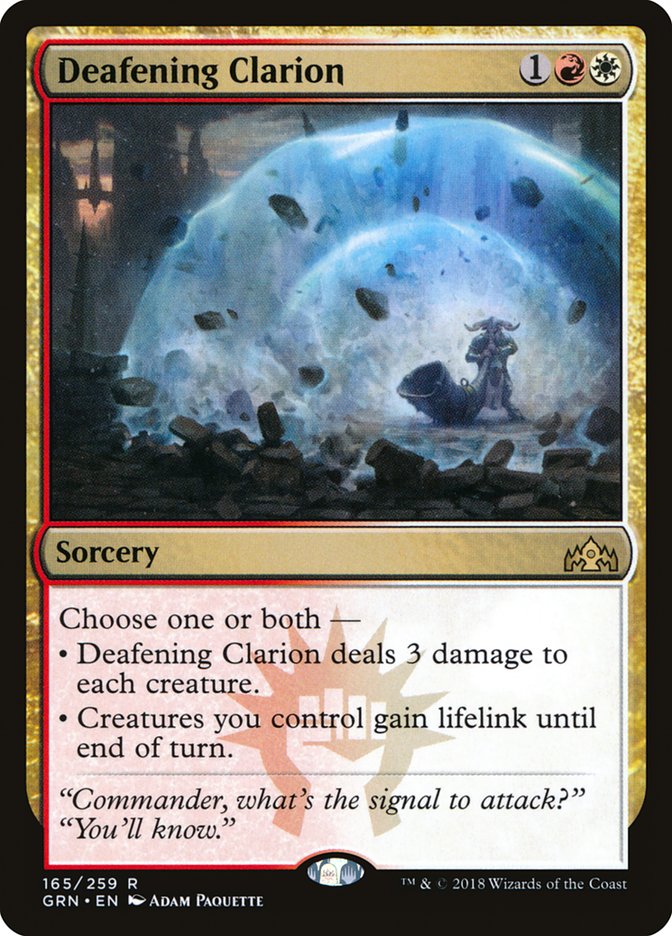The earlier in a format we are, the more viable it is to brew. On VS Live!, brewing is encouraged, especially with newer cards. The segment is based on playtesting, after all, and it’s easier to keep things fresh with new archetypes being jammed against some of the more proven strategies in the format, rather than simply trying out new sideboard plans in decks that are already established.
Two weeks ago, I was lucky enough to have the opportunity to step in on VS Live! on Ross Merriam’s behalf while we was off in London. What was originally meant to be a more casual deck ended up feeling much better than expected:
To sum up the video: Mardu Judith ended up winning against an Azorius Control deck that featured almost exclusively exile-based removal. One of the biggest boons of the deck, the fact that its creatures get value when they die, was mitigated in a pretty big way, but it was able to do well in spite of that.
In the last few weeks, I’ve been iterating on the deck a good bit and have arrived at a couple of different builds. In the video above, one of the biggest things to note is the fact that it was base-black, which made some cards less realistic than others by virtue of needing as least thirteen sources of untapped mana of the requisite color on Turn 1. This point led to the two different versions of Mardu Judith: a black-based version, and a red one.
To start things off:
Creatures (26)
- 3 Judith, the Scourge Diva
- 4 Gutterbones
- 3 Fireblade Artist
- 4 Hero of Precinct One
- 4 Footlight Fiend
- 4 Cruel Celebrant
- 4 Dreadhorde Butcher
Planeswalkers (2)
Lands (23)
Spells (9)
Sideboard

This version of the deck leans into resiliency and inevitability. Many of the threats are recurrable and it’s great at burning the opponent out in the late-game. The red version, on the other hand….
Creatures (27)
- 4 Fanatical Firebrand
- 4 Judith, the Scourge Diva
- 3 Fireblade Artist
- 4 Hero of Precinct One
- 4 Footlight Fiend
- 4 Cruel Celebrant
- 4 Dreadhorde Butcher
Lands (22)
Spells (11)
Sideboard

Rather than worry too much about how cards exchange with one another, the red-rooted version wants to convert its creatures to damage.
To break down the cards in the deck itself, as well as their roles:
Footlight Fiend is the easiest one-drop to cast in Mardu colors, and the fact that it can play a somewhat synergistic role in the deck is just gravy. The biggest thing that this deck wants is to have bodies to convert to damage, so having cheap creatures is an enormous deal.
Footlight Fiend being multicolor even sets up scenarios in which you can hold it after the first turn, but cast it after a Hero of Precinct One on the third turn in order to immediately generate a token with the Hero.
With so many multicolor cards in the deck, playing Hero of Precinct One is a no-brainer. Hero is easy to trigger, and in a deck that simply wants a raw quantity of expendable bodies, having a pseudo-Young Pyromancer is a welcome addition.
The motivation for playing this style of deck. The big draw to these cards is how they make combat a nightmare for players. The creatures in the deck may not be the biggest or most threatening things, but there are a lot of them, and the deck has a ton of reach. The fact that having a Cruel Celebrant and a Judith on the battlefield nearly invalidates Kaya’s Wrath is such a big deal for a creature deck.
This card should say a lot about how the deck is intended to be piloted. Rather than trying to grind the opponent out with things like Midnight Reaper, the deck wants to simply kill people, and Heroic Reinforcements is a great way to give more bodies to feed Cruel Celebrant and Judith, while also turning all of the early creatures and tokens from Hero of Precinct One into real attackers.
Fireblade Artist plays to what the deck is trying to do: get some early chip shots of damage and then convert all of the leftover creatures on the battlefield into finishing damage. There are only three copies in each list because it has incredibly diminishing returns, but the first copy is quite nice in the opening hand. Having two different two-drops that can be hasted out on the second turn is nice. The fact that it works so well with Hero of Precinct One just pushes it over the top.
Slith Firewalker is way better than it used to be.
Dreadhorde Butcher is easy to cast in this deck, triggers Hero, and even has the luxury of outgrowing Cry of the Carnarium if you’re on the play. In a deck that, once again, wants to get in some early damage and then convert its creatures to reach, Dreadhorde Butcher is perfect.
When the deck is planning to go a little bit longer, Sorin is a great way to provide redundancy for creatures in the deck. It isn’t always realistic to assume that any of your pieces are going to stick around for very long when people are packing removal, but they’re all great at punishing players for not immediately answering them.
Reanimating something like a Judith or a Hero while keeping Sorin on the battlefield is an incredible power play because it presents two cards that the opponent has to answer almost immediately. It also hurts players for leaning on a pile of removal, because Sorin can set up situations in which the opponent can’t even truly keep the same “piece” off the battlefield.
When referring to the “pieces” of the deck, it’s to say that synergy decks like this are generally going to want a mix of their cards in order to fire on all cylinders. Drawing three or four copies of Judith won’t be very good for obvious reasons, but even drawing too many copies of Cruel Celebrant or Hero of Precinct One can create a situation in which the deck doesn’t really function.
Not so good at attacking through anything.
Opponents will try to create such battlefields by using their removal to pick apart whatever payoff card is on a battlefield. Sorin does a great job of alleviating this problem, while also just being reasonable on his own.
On top of the recursion dynamics, Sorin’s static ability is great at helping the deck beat up on red decks. The general assumption would be that the deck is incredibly soft to Goblin Chainwhirler and friends, but that’s hardly the case.
Finally, Sorin’s +2 ability is fantastic for enabling Spectacle and Theater of Horrors pre-combat, which can be a big deal with all of the haste cards in the deck.
Every bit of Sorin is useful in the deck, and he’s consistently overperformed in testing. There aren’t more copies in the red version of the deck because the plan is to simply try to convert its resources to fast damage, rather than going long. This means lowering the curve of the deck, and Heroic Reinforcements is better at applying pressure than Sorin. This isn’t to say that Sorin is a bad card, but to communicate the fact that good cards can end up on the cutting room floor when trying to build towards a plan.
The difference in the two lists all stems from ripples created by the one-drops and the manabases that can support them. Fanatical Firebrand naturally is better at applying short-term pressure and combos well with Cruel Celebrant and Judith in order to give its controller the agency to choose when to get those triggers.
Without this agency, the Mardu pilot will be at the mercy of the opponent consenting to any creatures dying. That’s to say that the other times they’ll be dying are at the hands of spells that the opponent is casting, creatures that they choose to attack with, or creatures that they choose to block with.
This isn’t always a downside, as playing creatures that don’t require you to sacrifice any real material will have their own upsides. In Gutterbones’s case, it’s the fact that the Skeleton translates to the mid- and late-games far better than Fanatical Firebrand does.
This means that choosing to include Gutterbones in the deck is a conscious decision to try to have cards that translate to the mid-game better than others. Hence Sorin being a maindeck card in the black version of the deck, but not the red one.
Both versions of the deck have some form of card advantage, and rather than using Sorin in the red version, Light Up the Stage has been much more fitting. Fanatical Firebrand being able to enable it pre-combat absolutely comes up, and the fact that this take on the archetype is more willing to exchange cards for damage is a fundamental approach that Light Up the Stage is very interested in being a part of.
After testing several different removal spells over the course of a couple hundred matches, I kept circling back to Heartfire. Most of the other spells that would be good in the deck are good for the same reasons that one would want to sideboard something. Heartfire is the most versatile in the deck, and can create some absurd instant-speed situations with Dreadhorde Butcher or Footlight Fiend.
Being able to point Heartfire upstairs is just another way that this deck has an absurd amount of reach and can make opponents go from what feels like a safe life total to dead in a single combat step.
Notable Omissions
Whenever I play this deck, there are inevitably questions about why I’m not playing Card X or Y, and most of them come down to the fundamental strategy of the deck. There are cards more powerful than Footlight Fiend, to be sure, but they aren’t as good at applying pressure. To touch on those:
Bontu is trying to give up battlefield positioning in the name of generating raw cards off the top of the library. This isn’t something that an aggro deck generally will be interested in. This effect only has a bunch of upside if there are effects that benefit from the sacrifices, and having a large battlefield with upside to creatures dying isn’t exactly a difficult position to win from with this deck.
Drawing cards feels good, but the times that Bontu is underpowered or a dead card will far outweigh the number of games that Bontu swings back into the favor of the Mardu Judith player.
Priest of Forgotten Gods isn’t an aggro card. It’s barely a grindy card. This falls into a similar camp as Bontu, where you aren’t particularly interested in sacrificing some of your more powerful payoff creatures (think Hero of Precinct One and Judith, the Scourge Diva). Without having other effects, trading two cards on the battlefield for a random card off the top of the library and the opponent’s worst creature generally won’t be a favorable exchange.
Couple all of that with the fact that Priest of Forgotten Gods does so little on its own, and it becomes much harder to justify in an aggressive strategy. More on this in a second.
Midnight Reaper is almost good enough, but not quite. Three mana is a lot in this style of deck, and without sacrifice outlets, it creates more situations in which the opponent more or less has to choose that they are letting something be destroyed. In the more aggressively slanted versions of the deck, Midnight Reaper isn’t good enough at applying pressure.
In the slower version of the deck, things are closer, but the big issue is that decks with Cruel Celebrant aren’t generally trying to play things that aren’t good at generating card advantage in the form of pressure.
Cruel Celebrant is a cool card, but fundamentally doesn’t provide any kind of value outside of life lost and gained. This means that playing it alongside things that aren’t trying to generate some sort of value off this ability will be wrong.
This can go in both directions! It doesn’t always mean that playing the other cards is wrong, but it will very frequently mean that playing either Cruel Celebrant or the other card will be wrong. The main reason for this is because if you’re trying to generate cards with your resources, Cruel Celebrant won’t be able to do that.
When building a deck, having a cohesive plan that your cards are able to play to is absolutely paramount.
Sideboarding with the Deck
As is tradition with any deck spotlight I write, I don’t have a specific “cut these, add those” sideboard guide. That being said, these are the ways to prioritize cards when sideboarding for given matchups.
Mono-Red Aggro
Weaker cards:
Stronger cards:
The primary goal against the red deck is to take on a more controlling role while mitigating the effect that Goblin Chainwhirler has. Fireblade Artist usually trades with something, so it isn’t horrid, but it is pretty close to textboxless due to the fact that you’re the defender in this matchup. Footlight Fiend and Fanatical Firebrand naturally will be weaker against Goblin Chainwhirler.
The split between Mortify and Bedevil will vary depending on if the opponent has Chandra, Fire Artisan or Experimental Frenzy. They’re both fairly clunky as far as removal spells go, but having answers to both is important. Bedevil likely needs to stay in against red no matter what because it’s also a reasonable answer to Tibalt, Rakish Instigator, which can be a beating against our deck full of small creatures.
Prioritize getting a hit in with Dreadhorde Butcher in order to get it out of range of The Chainwhirler.
Shaving on Judith and Heroic Reinforcements is generally necessary because they’re pretty expensive and not trading very well with the opponent’s cards. You don’t need to cut every copy of them, but something towards the upper end of the curve has to give, and these are far less impactful than Experimental Frenzy or Sorin.
Esper Control
Weaker cards:
Stronger cards:
This matchup is fairly straightforward in terms of approaching creature decks versus control. Try to avoid committing too much to the battlefield, as they must eventually answer everything. Removal isn’t awful, especially the kind that can hit planeswalkers.
You’re likely interested in shaving Heartfire, but not cutting it entirely. It’s horrid against countermagic and not great when the opponent is trying to reduce the number of resources you have, but it is good when used in response to spot removal, doubly so when countering the exile and lifegain portions of Vraska’s Contempt.
Selesnya Creature Decks
Weaker cards:
Stronger cards:
Most of this matchup is a matter of trying to turtle up and lean on your synergies. The green and white creature decks will be lower on interaction than most things, meaning that it’s more likely to end up in the Magical Christmas Land scenarios with several payoff cards sticking around on the battlefield.
Judith, the Scourge Diva in particular is attractive due to how she makes combat such a nightmare for the opponent.
Lava Coil ends up being a necessary evil against these decks because Trostani Discordant and Shalai, Voice of Plenty are such huge beatings. Sorin isn’t as good as he normally would be because creatures aren’t dying as consistently.
Theater of Horrors struggles to come online whenever the name of the game is blocking and creating an impenetrable battlefield stall. Fireblade Artist isn’t great for similar reasons, even if it can give the deck a bit of reach. It’s harder to push through early bits of damage, so leaning on different synergy pieces is a bit better.
Bedevil is necessary against planeswalkers, but not necessary otherwise. Mortify is great against Conclave Tribunal and some of the token-producing enchantments.
Shaving on some, but not all, copies of Heroic Reinforcements is necessary here because it’s a good card to draw. Once. Copies after that can be a bit rough, as you only really want to cast it the turn that you’re going for the throat.
W/X Aggro
Weaker cards:
Stronger cards:
This is one of the deck’s better matchups in the format. Unsurprisingly, a deck full of X/1s struggles against a pile of Footlight Fiends doing Forked Bolt impressions. The play patterns themselves are similar to the last one, but the overall card quality is lower on the opponent’s part, which makes creatures trade more frequently while trying to apply pressure. This makes Sorin more attractive than he is against Selesnya.
Fireblade Artist and Heartfire aren’t great at grinding and end up on the sidelines as a result. Heroic Reinforcements is a little too expensive sometimes. Try to make the game go forever, and you’ll eventually get around to winning on the back of Sorin and Experimental Frenzy.
Simic Nexus
Weaker cards:
Stronger cards:
Most of this is fairly straightforward. Cut the cards that are focusing on grinding, because Nexus isn’t interested in playing a conventional game of Magic. Cast your creatures and beat their face in.
This can get tricky against Root Snare, which brings us to the weirdest card coming in out of the sideboard:
While brainstorming solutions to the Nexus problem, it became apparent that two things were true:
1. Combat damage wasn’t reliable enough for reach.
2. Tamiyo, Collector of Tales made Duress an iffy option for trying to pick apart Root Snares.
This means that we had to find a noncombat way to actually finish the opponent off before they took a million billion turns. So what’s the answer?
Triggers.
In the old Mardu Aristocrats deck from Avacyn Restored Standard, the deck played Blood Artist in conjunction with Blasphemous Act to try to combo-kill people.
It was a bit easier at the time because creatures were a little stickier, Boros Reckoner counted as fourteen damage, and Blood Artist counted creatures on both sides of the table. But when the opponent isn’t killing anything on your side of the battlefield and the deck can reliably get the first ten to fourteen points of damage in, you don’t quite need to go as big with the effect.
So far I’ve won a few games being able to simply deal eight to the head with Deafening Clarion, and the line even has the backdoor option of checking Biogenic Ooze. It ain’t pretty, but sometimes you just need a card to do something specific.
The Takeaway
All of this is meant to say that with many decks, there isn’t a perfect way to build them. There are all kinds of different plans, and different ways a deck can be built. Justin Parnell reached the quarterfinals of last weekend’s Standard Classic playing a third version of the deck that I didn’t even write about here.
Creatures (29)
- 2 Midnight Reaper
- 4 Tithe Taker
- 4 Judith, the Scourge Diva
- 2 Gutterbones
- 3 Fireblade Artist
- 4 Footlight Fiend
- 4 Cruel Celebrant
- 4 Dreadhorde Butcher
- 2 Grim Initiate
Planeswalkers (2)
Lands (22)
Spells (7)
Sideboard

When working on your own decks, it’s important to be sure of why you’re putting different cards in your deck, and what plans they’re fitting into. Every card is a puzzle piece, and it’s up to us to make sure we’re fitting them together in the way that makes the prettiest final picture.


